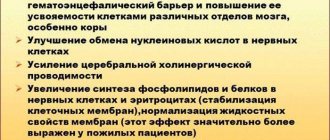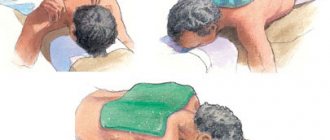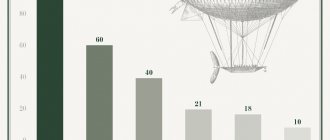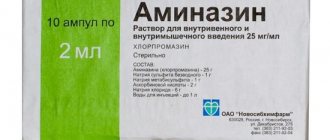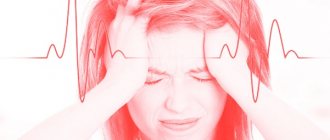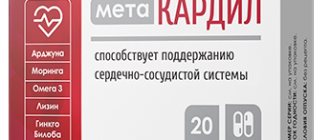Symptoms
Tension headache (TTH)
- a common type of pain in the head, characterized by three signs:
- A feeling of squeezing, pulling, or pressure on the scalp. The headache is usually symmetrical, reminiscent of “a hoop or a tight helmet tightening the head.”
- Accompanied by overexcitation of the mental sphere in the form of asthenia, increased anxiety and depression.
- Absence of gross organic changes in brain tissue: no atrophy, no neoplasms, or gross vascular disorders are detected.
This is one of the most common types of headaches. It occurs more often in women than in men. As a rule, it does not reach strong and painful expression. Allows you to continue your usual activities (study, work). Painkillers are weakly effective and can usually only reduce the intensity.
Sedatives and antidepressants, on the contrary, often bring relief.
Tension headaches tend to last for a long time, up to several hours (sometimes several days). There are chronic tension headaches that have been bothering you for years.
Prevention
Effective headache prevention is, first of all, lifestyle changes. Doctors recommend:
- normalize sleep: you need to sleep at least 8 hours every day and at night;
- have a good rest;
- minimize stress as much as possible;
- avoid physical inactivity: walks in the fresh air, moderate sports at the amateur level, swimming will help improve blood circulation and strengthen the muscle corset;
- eat right: avoid overeating, minimize the consumption of spicy, salty, canned foods, smoked foods, etc.; the diet must contain a sufficient amount of vitamins, macro- and micronutrients;
- normalize body weight;
- minimize or eliminate smoking and alcohol consumption;
- Drink at least 2 liters of clean water daily.
In addition, it is necessary to regularly visit doctors, monitor chronic diseases, and, in their absence, undergo a comprehensive check-up diagnosis.
Causes
There are many reasons. As a rule, in order for tension-type headache to develop, a combination of several factors is necessary:
- Mental: depression, anxiety, asthenia, neurosis, excessive and prolonged stress, psychological trauma, addiction, the predominance of psychological stress over physical stress.
- Neurological: increased muscle tone, physical inactivity, impaired outflow of intracranial fluid, osteochondrosis (dorsopathy) of the cervical spine.
- Abuse of painkillers and sedatives and drugs.
- Overwork, lack of sleep and malnutrition.
Development mechanism
The above causal factors trigger overexcitation in the median subcortical structures of the brain. The tone of the muscles of the neck and head increases. The pain sensitivity threshold decreases.
How to help
Tension headaches occur sporadically and do not require special treatment for a short time. In this case, it is enough to take a break from work, switch your attention, and give minimal physical activity (10 squats or push-ups).
Such pain should be treated as a signal of increased stress on the nervous system and psyche.
If the pain lasts more than 10-15 minutes, causes discomfort, distracts and interferes with current activities, you should do what is listed in the previous paragraph, take a shower or go out into the fresh air and walk (or jog) until you feel tired.
Drugs from the group of non-steroidal anti-inflammatory drugs can help: acetylsalicylic acid, paracetamol, diclofenac. This is first aid. Next, you should consult a neurologist or psychotherapist.
Causes of headaches in the crown area
Among the causes of parietal headaches are acute and chronic diseases of the hearing organ, nerves, muscles and joints, as well as the vascular system. Vital organs are concentrated in the area behind the ears, so ignoring painful sensations is dangerous. You should pay attention to the time of occurrence and nature of the headache in the crown, its intensity - this information is important for the attending physician during diagnosis.
Diseases of the hearing organ
If the parietal part of the head hurts on one or both sides, a hearing test must be performed. It has a complex structure, and disorders or inflammatory processes in any area can lead to painful sensations behind the ears. The difficulty of the examination lies in the fact that the internal parts of the hearing organ are not visible to the naked eye even when using standard diagnostic techniques. However, new diagnostic methods make it possible to accurately determine the cause of pain in the parietal part of the head associated with diseases of the hearing organ.
Otitis
Otitis is an inflammation of the ear in any of its parts. The cause of the disease can be injury, bacterial infection, or mechanical blockage of the ear canal. In children, chronic otitis media is often caused by hypertrophy (abnormal growth) of the adenoids. Inflammation can be acute or chronic, aseptic or purulent. It is important to treat the disease in a timely manner, since otitis often becomes chronic and worsens with hypothermia or colds, and also causes hearing impairment.
There are several types of otitis, depending on the location of the inflammatory process:
- Otitis externa - affects the ear canal and the outer surface of the eardrum, rarely spreading to the auricle. This is the most common and safest type and can be easily treated with ear drops. The pain becomes more severe when opening the mouth.
- Otitis media is an inflammation of the auditory tube and other components of the middle ear. The disease is accompanied by acute pain, which often intensifies at night. Patients also complain of a sharp deterioration in hearing, pain in the temples and frontal part of the head, noise and ringing in the ears.
- Internal otitis (labyrinthitis) is a rare, but most dangerous type. If the process spreads to the inner ear, it can lead to inflammation of the auditory nerve and hearing loss. Treatment is complex and includes a course of antibiotics, anti-inflammatory and painkillers.
With inflammation of the outer ear, the pain is one-sided, throbbing, spreads to the parietal region and intensifies during head movements. If the cause is a bacterial infection, discharge from the ear canal appears. When the internal parts are damaged, the pain spreads to the entire surface of the head. Treatment of otitis involves the use of anti-inflammatory ear drops and tablets, and also includes a course of antibiotic therapy.
Mastoiditis
Mastoiditis is inflammation of the mastoid process of the temporal bone. The disease often manifests itself as a complication of otitis media and is of bacterial origin. It is diagnosed in both adults and children of any age. This is a dangerous disease, since a bacterial infection causes purulent melting of tissues and, without appropriate treatment, can spread to important formations, including brain structures.
Mastoiditis can be identified by the following symptoms:
- the onset of clinical signs – some time (from several days to several weeks) after the development of otitis media;
- pain in the parietal region of the head and ears;
- increase in general body temperature;
- the appearance of purulent discharge from the auditory canals;
- protrusion of the auricle, possible redness of the skin and the appearance of a painful swelling behind the ear.
The basis of treatment for mastoiditis is a course of antibiotic therapy. At the same time, a regimen is prescribed aimed at relieving inflammation and pain. In the absence of timely therapy, the process can spread to the structures of the inner ear and cause purulent melting of tissues. Typical complications are perforation of the eardrum and the formation of a postauricular purulent abscess under the periosteum. Rarely, a bacterial infection with mastoiditis spreads to the temporal lobe of the brain or to the neck area with the formation of an abscess.
Blockage of the ear canals
The main cause of mechanical blockage of the auditory canals, which leads to pain in the parietal part of the head, is cerumen plug. It is formed either due to lack of hygiene and ear care, or due to increased formation of wax. In addition, the process can be triggered by the incorrect structure of the ear canals, their narrowing due to anatomical features.
In some patients, the wax plug is visible to the naked eye. It is a collection of gray or brown dense mass that completely blocks the ear canal. However, it may be located in the far part of the outer ear. Its presence can be assumed by characteristic symptoms:
- gradual deterioration of hearing, including one-sided;
- the appearance of sensations of noise, ear congestion;
- nausea and vomiting that occurs regardless of food;
- headaches in the parietal part of the head.
Blockage of the ear canal can be caused by foreign objects. More often they get into the ears of children, causing pain and hearing impairment over time. If a child complains of headaches in the parietal part of the head, it is necessary to contact an otolaryngologist to check the contents of the ears. Foreign objects are removed with special tools. It is not recommended to carry out the procedure at home, so as not to damage the eardrum.
Meniere's disease
Meniere's disease is a chronic disease of the inner ear in which the amount of endolymph in the labyrinth increases. This value is not constant, it may increase due to deterioration in the removal of fluid from the body, poor diet, or taking certain groups of drugs. The disease often manifests itself in acute form in patients aged 20 to 50 years and may have a hereditary origin. Also, increased pressure in the inner ear can be caused by head injuries or allergic diseases.
Meniere's disease can be recognized by the following signs:
- attacks of dizziness that last from 1 to 6 hours, rarely longer;
- nausea and vomiting, increased sweating;
- unsteadiness of gait, loss of coordination of movements;
- pain in the ears and in the parietal part of the head.
The labyrinth is a formation in the inner ear formed by the bones of the skull. It has a complex structure and performs several functions simultaneously. It picks up sound vibrations and transmits information to the brain, but is also a center of balance, thanks to the regulation of the amount of endolymph. Treatment of the disease is symptomatic, often the doctor prescribes diuretics and a low-salt diet. These principles allow you to stimulate the removal of excess fluid and prevent its accumulation in the body.
Fungal diseases
Otomycosis is a fungal disease that can cause pain in the crown and behind the ears. Its causative agents are various representatives of human fungal microflora. The disease can develop when an infection enters from the outside or when it spreads from other existing foci. It can also penetrate during trauma and surgery. Otomycoses often occur in humid and dusty climates. This air contains a large number of microorganisms, and after they enter the ear, an optimal environment is created for their development.
Otomycoses are classified according to the place of their occurrence and typical clinical signs:
- otomycosis of the outer ear is the most common type, manifested by itching and soreness of the auricle;
- mycotic otitis media is a dangerous disorder that is a fungal complication of bacterial otitis;
- fungal myringitis - damage to the eardrum, which can lead to thinning and perforation;
- otomycosis of the postoperative cavity - antibiotics and steroidal anti-inflammatory drugs create a suitable environment for the development of fungal microflora.
Otomycosis progresses rapidly without the use of antifungal drugs. The infection causes pain in the ears and crown of the head, itching and hearing loss. The diagnosis is made based on the examination of smears, in which various representatives of fungal microflora are found.
Cochlear neuritis
Cochlear neuritis is inflammation of the auditory nerve. This is an acute or chronic disease that leads to acute pain and hearing impairment. Acoustic neuritis can be caused by inflammation of the inner or middle ear, as well as various infectious diseases. In addition, its damage is observed in cases of poisoning, as a result of traumatic brain injuries and operations during which nerve fibers are damaged.
With cochlear neuritis, there is acute pain in the ears and head, which can be concentrated in the parietal region. Nausea, vomiting, and loss of coordination of movements also develop. Patients complain of a sharp deterioration or complete loss of hearing, tinnitus and other auditory hallucinations.
Inflammatory diseases
Pain in the parietal part of the head is the body’s response to various inflammatory reactions. Vital formations are located in this area, so it is important to undergo an examination and determine the causes of discomfort. There are several inflammatory diseases that can be diagnosed in adults and children with pain in the parietal part of the head.
- Inflammation of the temporomandibular joints is a common cause of pain in the crown area. These joints are located symmetrically near the ears and connect the upper and lower jaws. Their inflammation can be a consequence of injury or dental disease.
- Sinusitis is inflammation of the paranasal sinuses. These are cavities formed by the bones of the skull, normally filled with air. This group includes sinusitis, frontal sinusitis, ethmoiditis, sphenoiditis, as well as combined forms. When inflammation occurs, the cavities become filled with contents, which in advanced cases must be removed surgically.
- Lymphadenitis is inflammation of the lymph nodes. The process is often associated with previous infectious diseases, since the lymph nodes are an organ of immune defense. Lymphadenitis can also develop with congenital or acquired immunodeficiencies.
- Meningitis is a dangerous disease in which inflammation of the membranes of the brain occurs. The pain is acute, girdling, spreading to the parietal region and the entire surface of the head.
Inflammatory diseases should be treated in the early stages. Otherwise, they can progress and spread to surrounding organs and tissues. For therapy, a course of anti-inflammatory drugs is selected that will eliminate the main cause of pain in the parietal part of the head.
Infectious diseases
A viral or bacterial infection that enters the body from the outside is one of the main causes of pain and inflammation. Its representatives cause inflammation and pain, as well as various additional symptoms. There are several diseases that can cause pain in the parietal part of the head.
- Infectious mumps (mumps) is an inflammation of the parotid salivary glands caused by viruses. The disease most often occurs in children. The typical clinical picture includes symmetrical enlargement of the salivary glands under the ears, increased temperature and a general deterioration in health. Specific prevention includes vaccination.
- Shingles is a viral disease that causes severe headaches. In chronic cases, hearing loss may occur.
- Flu, sore throat, ARVI - viral diseases of the respiratory tract can also cause pain in the parietal region. After some time, fever, rhinitis, cough and other characteristic signs of a cold are added to the symptoms.
Infectious diseases often worsen and cause headaches in the crown of the head during the cold season and in the off-season. This is due to a decrease in vitamin intake, insufficient sunlight exposure to the skin (the main source of vitamin D), as well as a weakened immune system. Treatment is specific, prescribed based on the symptoms of the disease and an accurate diagnosis; a course of antibiotics may be required.
Other reasons
Soreness in the crown area is a typical symptom for various diseases. They have different origins and may be accompanied by additional symptoms. It is important to conduct a complete differential diagnosis in order to exclude the possibility of developing even rare pathologies and determine the exact cause of pain. The examination may reveal the following abnormalities:
- osteochondrosis – a disease of the intervertebral discs and vertebrae, which is accompanied by compression of blood vessels and nerves, acute headaches;
- migraine – attacks of unilateral headaches that have a chronic recurrent course;
- high blood pressure;
- dental diseases, including caries, incorrect position of wisdom teeth - the cause of pain that spreads from the upper jaw to the area behind the ears.
Treatment and prevention methods differ for different disorders. The attending physician will be able to select the appropriate tactics. The Clinical Brain Institute specializes in the diagnosis and treatment of disorders that are accompanied by pain in the parietal part of the head.
Identifying tension headaches
TTH is determined by a doctor based on an examination of the patient, an assessment of the anamnesis (life history, previous diseases), neurological and mental state. The doctor also evaluates heredity and the condition of internal organs.
As a rule, a consultation with an experienced doctor is enough to establish a diagnosis. In rare cases, additional examination methods may be needed in the form of blood and urine tests, electroencephalography and brain tomography.
If you have a headache, you should not immediately run to a tomography or encephalography. Visit your doctor first!
What is intracranial pressure?
This is the pressure inside the cranial cavity. The brain is surrounded by cerebrospinal fluid, a fluid that is necessary to nourish nerve tissue. It is constantly produced and flows from the skull. Due to this process, optimal pressure inside the skull is maintained. Normally it is 10-15 mmHg. Art.
Intracranial pressure is the force with which the brain presses on the walls of the skull
We are talking about high intracranial pressure when the readings exceed 25 mmHg. Art. The critical value is 35 mmHg. Art. and more. The patient is diagnosed with intracranial hypertension or liquor-hypertensive syndrome.
Shpidonov Gennady Stanislavovich
Neurologist
Rostov State Medical University (neurology)
10 years of experience
Pathology never occurs independently; it appears for a number of reasons - both congenital and acquired. Slight fluctuations in the direction of increasing intracranial pressure (ICP) are possible when tilting the head, physical activity, or sneezing. But high rates are a consequence of more severe conditions:
- traumatic brain injury (TBI), back injury with spinal cord damage;
- brain tumors, cysts, abscesses;
- hydrocephalus;
- aneurysm or vascular thrombosis;
- infectious diseases: encephalitis, meningitis;
- swelling of the brain after a stroke;
- encephalopathy;
- intracerebral hemorrhage;
- taking potent drugs that can disrupt the production and circulation of cerebrospinal fluid: hormonal agents, antibiotics and others;
- intoxication with chemicals.
At risk are hypertensive patients, people with metabolic disorders, obesity, vascular pathologies, patients who have had a stroke, or surgery on the brain or spinal cord.
Note! Patients with hypertension do not necessarily develop intracranial hypertension. Sometimes even hypotensive people suffer from high ICP.
The causes of high ICP in adults and children are similar. But often the appearance of intracranial hypertension in a child is facilitated by congenital developmental anomalies (hydrocephalus or microcephaly), birth injuries, oxygen starvation, and asphyxia. Premature babies are at risk.
The pressure inside the skull increases for two reasons: cerebrospinal fluid is produced in excess or it flows worse
Depending on the cause of its occurrence, the syndrome can occur in acute or chronic form. The first one is caused by injuries and neuroinfections. The chronic form develops gradually as brain tumors grow and cerebrovascular accidents occur.
If intracranial pressure increases, it is necessary to obtain qualified help from a neurologist. It is important not only to detect the underlying cause and eliminate it, but also to restore impaired cerebrospinal fluid dynamics. If this is not done, the symptoms of the disease will persist even after treatment of inflammation, head or back injury, or tumor removal.
Treatment
Therapeutic assistance for tension-type headache is selected individually. There are no universal medications or therapies specifically for tension headaches. The main goals of treatment: normalization of the emotional state, correction of the mental state, restoration of normal muscle tone, alignment of the sleep-wake cycle, formation of a healthy lifestyle.
Methods of therapy for tension-type headache:
- Pharmacotherapy: antidepressants, nootropics, neurometabolic therapy, restoratives, muscle relaxants, etc.
- Psychotherapy: cognitive therapy, relaxation training, hypnosis and trance states.
- Biofeedback therapy.
- Physiotherapy: electrosleep, electroanalgesia.
- Diet therapy.
- Massage, manual therapy, physical therapy.
After the result is achieved and the pain has gone, you should follow the doctor’s advice on the prevention of tension-type headache: strengthen mental and physical health, maintain a daily routine and exercise routine, conduct a medical examination (identify diseases in the early, initial stages).
